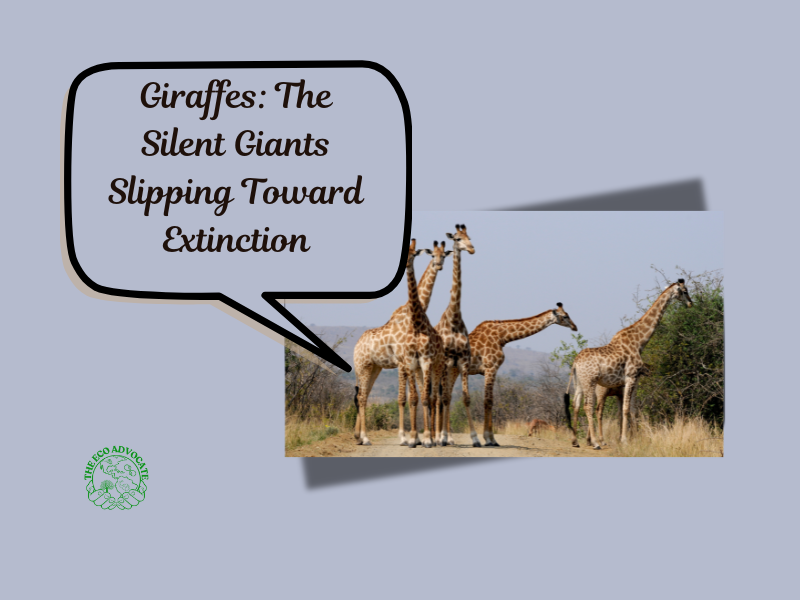Giraffes 🦒—the iconic, long-necked giants of the African savannah—are more than just a symbol of grace and elegance. They are vital architects of their ecosystems, playing a crucial role in maintaining the balance of nature. Yet, despite their towering presence, these gentle giants are silently slipping toward extinction. Over the past three decades, giraffe populations have declined by nearly 40%, a staggering loss that demands our immediate attention and action.
The Role of Giraffes in Ecosystems
Giraffes are often referred to as nature’s gardeners. As they feed on the leaves of acacia trees, their browsing habits help prune vegetation, promoting new growth and maintaining the health of the savannah. This process not only benefits the trees but also supports countless other species that rely on the same habitat. Birds, insects, and smaller mammals all thrive in the ecosystems shaped by giraffes.
Moreover, giraffes are seed dispersers. As they move across vast landscapes, they carry seeds in their dung, helping to regenerate plant life and maintain biodiversity. Their presence is a cornerstone of the delicate balance that sustains African ecosystems.
The Threats They Face
Despite their ecological importance, giraffes are facing an alarming decline. The primary drivers of this crisis include:
- Habitat Loss: As human populations expand, giraffe habitats are being fragmented and destroyed for agriculture, mining, and urban development. This loss of space limits their access to food and water, pushing them closer to extinction.
- Poaching: Giraffes are hunted for their meat, hides, and tails, which are often used as status symbols or sold as trinkets. Illegal wildlife trade continues to threaten their survival.
- Human-Wildlife Conflict: As giraffes are forced into closer proximity to human settlements, conflicts arise. They are sometimes killed for encroaching on farmland or competing with livestock for resources.
- Climate Change: Changing weather patterns and prolonged droughts are further stressing giraffe populations, reducing the availability of food and water.
Why We Need to Act Now
The decline of giraffes is not just a loss for biodiversity; it’s a loss for us all. These majestic creatures are a living testament to the beauty and complexity of nature. Their disappearance would have cascading effects on the ecosystems they inhabit, leading to a ripple effect that could destabilize entire regions.
But there is hope. Conservation efforts, such as habitat protection, anti-poaching initiatives, and community-based conservation programs, have shown promise in stabilizing and even increasing giraffe populations in certain areas. By supporting these efforts, we can help ensure that giraffes continue to roam the savannahs for generations to come.
How You Can Help
- Raise Awareness: Share the story of giraffes and their plight. Use your voice to educate others about the importance of wildlife conservation.
- Support Conservation Organizations: Donate to or volunteer with organizations dedicated to protecting giraffes and their habitats.
- Advocate for Policy Change: Push for stronger wildlife protection laws and policies that address habitat loss, poaching, and climate change.
- Make Sustainable Choices: Reduce your environmental footprint by supporting sustainable practices and products that minimize harm to wildlife habitats.
Stand Tall for Giraffes Giraffes have stood tall for millions of years, but now they need us to stand tall for them. By taking action today, we can help ensure that these gentle giants continue to grace our planet with their presence


This is so upsetting, as giraffes are one of nature’s most beautiful and majestic creatures.
In agreement